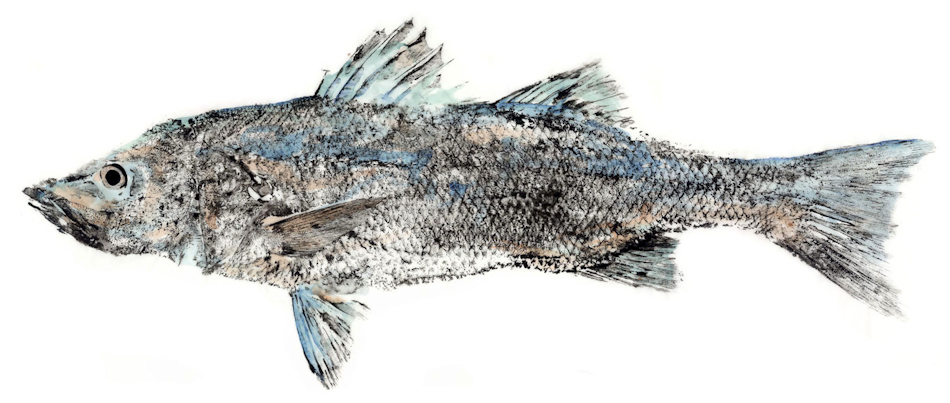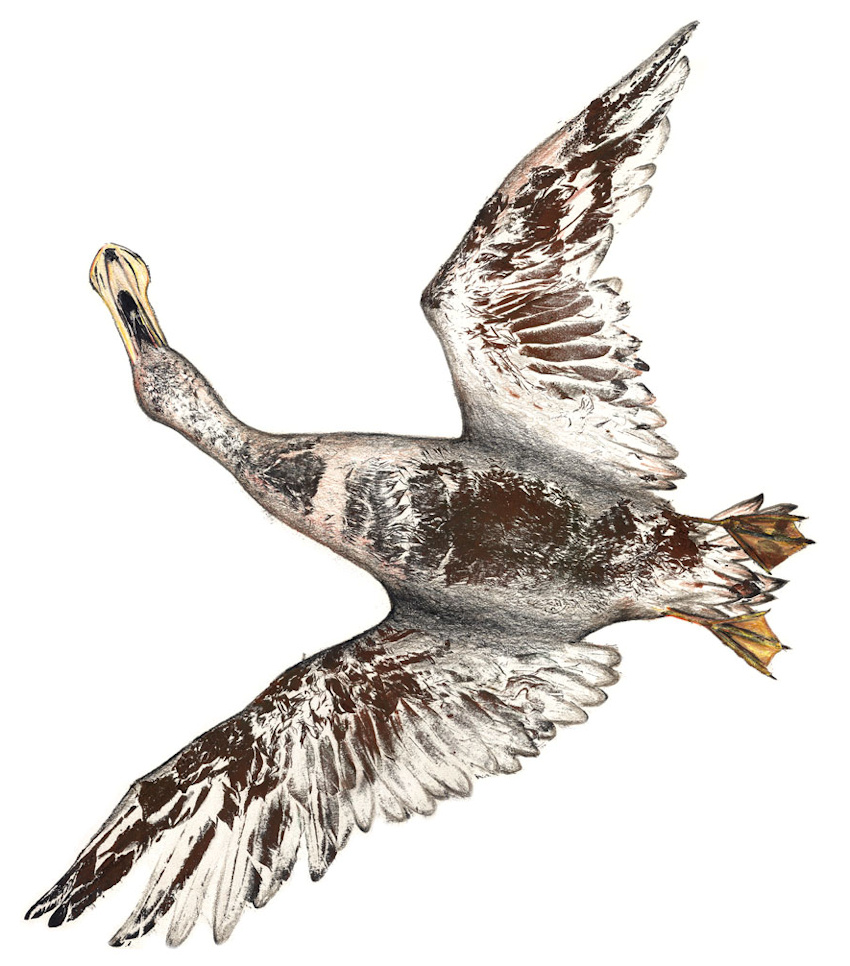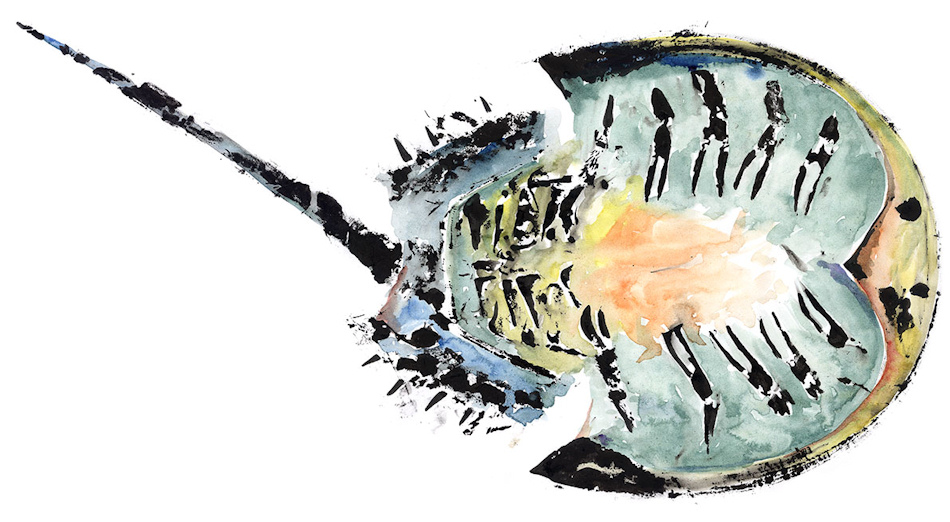Biologists Adam Cohen and Ben Labay have adapted a Japanese art form called Gyotaku to produce inked impressions of fish, fowl, and much more. Creating these works provides them with an artistic outlet, but they hope it will also engage the public with species they might not otherwise encounter.
After viewing the works, “we hope people leave feeling they saw something very special that they couldn’t see anywhere else,” they write on their website. “It’s been interesting to us to see how people respond.”
Gyotaku dates back to the 1800s and involves the creation of rubbings or impressions of fish, according to Cohen and Labay. The technique was originally used by Japanese fisherman to document their catch: By applying ink to one side of the fish and then pressing it against rice paper, they could record the size and type of each fish.
“So it really started as a practical documentation tool that only later developed into an intricate art form,” they wrote.
Labay and Cohen are both full-time biologists; Labay is with the University of Texas at Austin, while Cohen is collections manager of ichthyology at the Texas Natural History Collections. They both work with preserved specimens at the Texas Natural Science Center, which is connected to both the university and the Natural History Collections.
They both also pursued art on the side, and the project — aptly titled “Inked Animal” — was a natural diversion from their science lives, according to their site. As biologists they conduct fieldwork to collect specimens for the museum, which is helpful in a practical sense in terms of finding new subjects. But their research as scientists has also given them a deeper knowledge of local natural history, allowing them to highlight Texas biodiversity, which is also a goal of the project.
While they began with fish, Labay and Cohen have since expanded their scope to include grasshoppers, geese, crabs, foxes — and, well, seemingly a little bit of everything.
“At first we sought to print intact animals in a very pristine way, as in the tradition of Gyotaku,” they wrote. “Now we are starting to realize that some of the damaged specimens — mummified, rotten, or dismembered — make the most interesting prints and tell more interesting stories. Our tolerance for ‘gross’ is very high.”
The pair also experiments with materials, such as using various inks, paints, or even clay, along with different paper thicknesses. After the specimen is pressed against the paper, they may somewhat modify the impression, using brushes or pencils to add detail or color, for example.
Their approach and methods continue to change through trial and error. “I wouldn’t go so far as to say that we use the scientific method in our art process, but it is an ad hoc sort of experimental process,” the website states.
Their role in science also influences the final product: “As biologists, we start from a place of curiosity, reverence, and appreciation with regards to the animals and we think that comes through in the final pieces,” they wrote.
“Inked Animal” will be part of the East Austin Studio Tour being held on November 16-17 and 23-24. For more images and information, visit inkedanimal.com.



